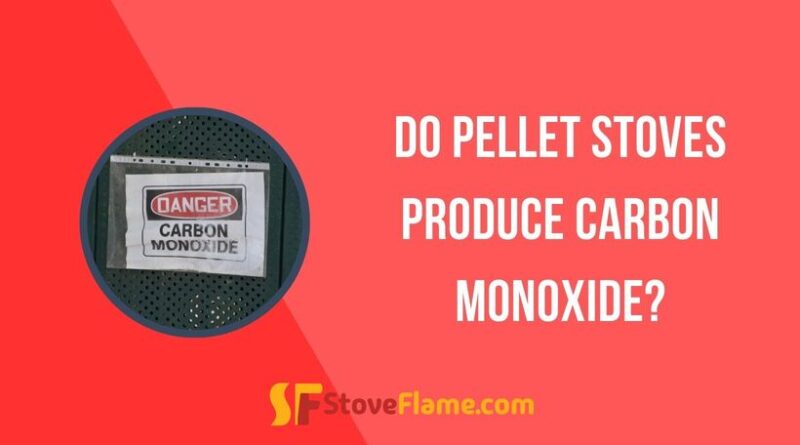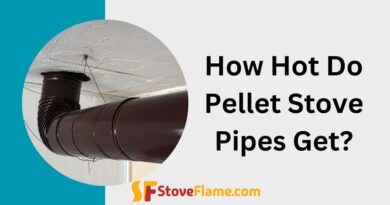Do Pellet Stoves Produce Carbon Monoxide?
Pellet stoves have become increasingly popular in recent years as a sustainable heating option for homes. These stoves use compressed wood or biomass pellets as fuel, making them a more environmentally friendly alternative to traditional wood-burning stoves. However, with the rise in popularity of pellet stoves, there has also been a growing concern about their potential dangers.
One important aspect to consider is the potential for pellet stoves to generate carbon monoxide, a dangerous gas that can pose health risks or even be fatal if breathed in large amounts. This article will delve into the factors that can contribute to carbon monoxide emissions from pellet stoves and the level of risk they may present to homeowners.
It will also cover ways to prevent carbon monoxide leaks and ensure the safe use of pellet stoves. It is crucial for homeowners to be aware of the potential hazards associated with pellet stoves and to take necessary steps to protect themselves and their loved ones. Let’s explore the topic of carbon monoxide production in pellet stoves to better understand the risks involved.
How Pellet Stoves Work?
Pellet stoves operate by utilizing a fuel source known as wood pellets. These small, cylindrical pellets are typically made from compressed sawdust or agricultural waste materials. The stove contains a hopper where the pellets are stored, which automatically feeds them into a combustion chamber. Within the combustion chamber, the pellets are ignited and burned.
The heat produced is then circulated throughout the room using a fan or blower system. Some pellet stoves also feature thermostats or control panels, allowing users to easily adjust the temperature to their desired level. The use of pellets as fuel offers several advantages, including clean and efficient combustion, as well as the convenience of automated feeding systems.
Pellet Stove Comparison to Traditional Wood Stove
When comparing pellet stoves to traditional wood stoves, there are a few key differences to consider. Firstly, pellet stoves are known for their convenience and ease of use. Unlike traditional wood stoves that require constant manual feeding and tending, pellet stoves feature automated feeding systems. This means that once the hopper is filled with pellets, the stove can operate for hours without needing additional fuel. This hands-off approach can be especially appealing for individuals who want a reliable heat source without the constant maintenance.
Additionally, pellet stoves are designed to burn fuel more efficiently, resulting in lower emissions and less ash buildup compared to traditional wood stoves. This can lead to a cleaner and more environmentally friendly heating experience.
Lastly, pellet stoves offer more precise temperature control through their thermostats and control panels. This allows users to easily adjust the heat output to their desired level, providing a comfortable and consistent warmth throughout their space.
Health Risks Associated with Carbon Monoxide
It is important to be aware of the potential health risks associated with carbon monoxide when using any type of heating appliance, including pellet stoves.
Carbon monoxide is a colorless and odorless gas that is produced when fuels such as wood or pellets do not burn completely. Breathing in high levels of carbon monoxide can be extremely dangerous and even fatal.
Symptoms of carbon monoxide poisoning can include headaches, dizziness, nausea, confusion, and shortness of breath. It is crucial to have proper ventilation when using a pellet stove to ensure that any carbon monoxide produced is safely expelled outside.
Installing a carbon monoxide detector in your home is also highly recommended to provide an early warning in case of any potential leaks. Regular maintenance and inspections of your pellet stove by a certified professional are essential to ensure its safe and efficient operation.
Taking these precautions will help you enjoy the warmth and convenience of a pellet stove while keeping yourself and your loved ones safe from the risks of carbon monoxide.
Do Pellet Stoves Produce Carbon Monoxide?
Pellet stoves have become a popular alternative for heating homes, and many people wonder if they produce carbon monoxide. While it is true that pellet stoves burn fuel, including wood pellets, which can potentially produce carbon monoxide, modern pellet stoves are designed with safety in mind. Most pellet stoves have a combustion system that ensures efficient burning of pellets, minimizing the production of harmful gases like carbon monoxide.
However, it is essential to remember that no heating appliance is completely risk-free. To ensure your safety, make sure your pellet stove is properly installed by a professional and regularly maintained.
Additionally, it is always a good idea to have a carbon monoxide detector in your home, regardless of the type of heating system you use. By taking these precautions and staying vigilant, you can enjoy the warmth and comfort of a pellet stove while keeping your home safe from carbon monoxide.
Preventing Carbon Monoxide from Pellet Stoves
To further prevent carbon monoxide from pellet stoves, it is crucial to have proper ventilation. Ensure that the flue pipe is correctly installed and free from any blockages or obstructions. Regularly inspect the pellet stove’s exhaust system and chimney to ensure they are clean and in good condition.
It is also important to follow the manufacturer’s guidelines for maintenance and cleaning, as a buildup of soot or debris can increase the risk of carbon monoxide emissions.
Lastly, never use improper fuels or materials in your pellet stove, as this can lead to incomplete combustion and the production of carbon monoxide. By taking these preventative measures and being proactive about safety, you can confidently enjoy the warmth and efficiency of your pellet stove while minimizing the risk of carbon monoxide.
Sources of Carbon Monoxide in the Home
There are several sources of carbon monoxide in the home that can pose a risk to your health and safety. One common source is gas-powered appliances such as furnaces, water heaters, and stoves. If these appliances are not properly maintained or if there is a malfunction, they can release carbon monoxide into your living space.
Another source is wood-burning fireplaces or stoves, which can produce carbon monoxide if the ventilation system is blocked or if the fire is not burning efficiently.
Additionally, generators, charcoal grills, and vehicles running in attached garages can also produce dangerous levels of carbon monoxide if proper ventilation is not in place. It is important to be aware of these potential sources and take necessary precautions to prevent carbon monoxide poisoning in your home.
Safety Measures for Pellet Stove Usage
When it comes to using pellet stoves, it is crucial to prioritize safety measures to ensure the well-being of everyone in your home. Firstly, it’s important to have your pellet stove professionally installed by a certified technician. Proper installation ensures that the stove is correctly vented and connected to prevent any potential leaks or malfunctions.
Regular maintenance is also essential, including cleaning the stove and chimney regularly to prevent the buildup of debris and creosote, which can pose fire hazards.
Additionally, keeping a safe distance from the stove, especially for children and pets, is also crucial to prevent burns or accidents. By following these safety measures, you can confidently enjoy the warmth and efficiency of your pellet stove while keeping your household safe.
Encouragement to Prioritize Safety When Using Pellet Stoves
To further prioritize safety when using pellet stoves, it is important to be mindful of a few additional precautions. Always ensure that the area around the stove is clear of any flammable materials, such as furniture, curtains, or rugs. This will minimize the risk of accidental fires.
Additionally, never leave the stove unattended while it is in operation for extended periods. It is best to have someone present in the room to monitor the stove and address any issues that may arise promptly.
Lastly, familiarize yourself with the manufacturer’s instructions and guidelines for operating the pellet stove. This will ensure that you are using the stove correctly and minimizing any potential risks. By taking these extra safety measures, you can enjoy the warmth and comfort of your pellet stove with peace of mind.
Conclusion
In conclusion, while pellet stoves do produce carbon monoxide, they are designed with safety features to minimize this risk. As long as you properly install, maintain, and use your pellet stove, it can be a safe and efficient heating option for your home. However, it is always important to have a carbon monoxide detector in your home and to regularly check and replace the batteries to ensure your family’s safety. With the right precautions, you can enjoy the warmth and convenience of a pellet stove without worry.
I'm Daniel Miller, the proud owner of StoveFlame. With over five years of experience in this dynamic field, I've honed my skills and passion for delivering top-notch quality and accuracy in everything I do.





